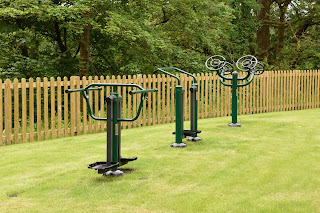Transforming Learning Spaces: The Evolution of Educational Interiors
In today’s fast-paced educational environment, creating stimulating and functional classrooms is no longer a luxury—it’s a necessity. The design and quality of learning environments can have a substantial impact on student engagement, teacher effectiveness, and overall academic performance. One of the most critical components in shaping these spaces is the selection of appropriate school furniture. From ergonomic desks to flexible seating arrangements, school furniture plays a pivotal role in enhancing comfort, focus, and collaboration in both traditional and modern classrooms.
Modern Trends in School Furniture Design
As teaching methodologies evolve, so does the demand for innovative school furniture solutions. Traditional rows of desks and chairs are being replaced by adaptable setups that encourage interactive learning. Flexible layouts with modular furniture allow classrooms to transform from lecture spaces to group discussion zones within minutes. The incorporation of adjustable desks, mobile storage units, and multifunctional seating encourages a dynamic educational atmosphere that can accommodate various teaching styles and student needs.
Quality school furniture is no longer solely about durability—it’s also about promoting inclusivity and supporting the physical development of students. Furniture designed with ergonomics in mind helps reduce fatigue, improve posture, and minimize the risk of musculoskeletal issues, which can be particularly important during formative years. Schools are increasingly prioritizing furniture made with environmentally friendly materials and sustainable production practices, aligning with global efforts toward greener, healthier learning environments.
Selecting the Right Furniture for Schools
When it comes to sourcing furniture for schools, there is no one-size-fits-all solution. The selection process must consider a range of factors including age group, curriculum demands, room dimensions, and budget. Primary school furniture needs to be colorful, safe, and sized appropriately for young learners. In contrast, secondary school setups might require more robust and versatile pieces that cater to older students’ academic and social needs.
Moreover, specialized furniture is required for specific subjects. Science labs, art studios, and libraries all have distinct furniture requirements. For instance, high stools and durable countertops are essential in labs, while cozy seating and bookcases define a reading corner. Schools should invest time in analyzing their layout, student demographic, and teaching objectives before committing to a furniture plan. Consulting with educational furniture specialists can greatly assist in achieving a cohesive and effective setup.
The Role of Technology in Shaping Furniture Choices
As technology becomes increasingly integrated into the curriculum, the need for compatible furniture also grows. Desks with built-in cable management, charging ports, and compartments for devices are becoming standard in many modern classrooms. Interactive whiteboards and digital displays demand new room configurations and more flexible seating arrangements. School furniture must now be tech-ready, supporting both the infrastructure and pedagogical methods schools use to deliver digital content.
Furthermore, remote and hybrid learning models have added another layer of complexity. Schools must now consider furniture solutions that can transition smoothly between physical and virtual learning environments. Lightweight, stackable, and easy-to-clean materials are preferred, especially in response to the heightened hygiene requirements brought on by recent global events.
Why Ergonomics Matter in Educational Settings
Comfort is closely linked to productivity, and this is especially true in schools. Poorly designed furniture can lead to discomfort, distraction, and long-term health issues. Ergonomic school furniture considers the natural movements and postures of students, promoting alertness and reducing fatigue. Chairs with adjustable backrests, footrests, and proper lumbar support are crucial in supporting long study hours.
Teachers also benefit from ergonomically sound furniture. Standing desks, adjustable teaching podiums, and padded seating can make long teaching sessions more manageable. An investment in ergonomics not only enhances the physical well-being of both students and staff but also contributes to improved concentration and academic outcomes.
Customization and Branding Opportunities
Schools looking to reinforce their identity can also explore custom furniture options. From colors that reflect school branding to logos engraved on tables and chairs, customized furniture provides an opportunity to create a unified visual experience. Tailored solutions can also accommodate specific space constraints or unique teaching philosophies. Whether it's a Montessori setup requiring open, natural spaces or a tech-forward institution looking for modern aesthetics, the right furniture can bring the vision to life.
The Importance of Reliable Suppliers
For educational institutions, partnering with a dependable supplier is key to securing durable, cost-effective, and timely furniture solutions. A trusted source such as www.schoolfurniture-direct.co.uk provides a wide range of products tailored specifically for educational settings. With an emphasis on quality and affordability, institutions can confidently equip classrooms, staff rooms, laboratories, and more.
Another advantage of working with specialized providers is access to expert advice and planning assistance. Understanding the nuances of furniture for schools requires insight into both education and design. From initial consultation to after-sales support, experienced suppliers can guide schools through every stage of the purchasing process.
Sustainability and Long-Term Value
Educational institutions are increasingly placing importance on sustainability. Investing in eco-friendly furniture not only supports global environmental goals but also teaches students about responsible consumption. Many manufacturers now use recycled materials, non-toxic finishes, and sustainable sourcing practices. Choosing such products ensures long-term value and aligns with school sustainability policies.
Well-constructed school furniture also has a longer life span, reducing the frequency and cost of replacement. While the initial investment might be higher, quality materials and workmanship often lead to lower maintenance and greater resilience, making them more economical in the long run.
Conclusion: Building Better Learning Environments
The classroom is more than just a space—it's a foundation for learning, collaboration, and growth. By investing in well-designed, functional, and future-ready school furniture, educational institutions can create environments where students thrive. Whether updating a single classroom or outfitting an entire campus, the right furniture can significantly enhance the learning experience.



Comments
Post a Comment